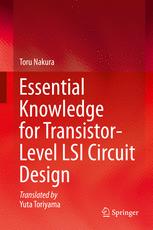

Most ebook files are in PDF format, so you can easily read them using various software such as Foxit Reader or directly on the Google Chrome browser.
Some ebook files are released by publishers in other formats such as .awz, .mobi, .epub, .fb2, etc. You may need to install specific software to read these formats on mobile/PC, such as Calibre.
Please read the tutorial at this link: https://ebookbell.com/faq
We offer FREE conversion to the popular formats you request; however, this may take some time. Therefore, right after payment, please email us, and we will try to provide the service as quickly as possible.
For some exceptional file formats or broken links (if any), please refrain from opening any disputes. Instead, email us first, and we will try to assist within a maximum of 6 hours.
EbookBell Team

4.4
32 reviewsThis book is a collection of the miscellaneous knowledge essential for transistor-level LSI circuit design, summarized as the issues that need to be considered in each design step. To design an LSI that actually functions and to be able to properly measure it, an extremely large amount of diverse, detailed knowledge is necessary. Even though one may read a textbook about an op-amp, for example, the op-amp circuit design may not actually be possible to complete in one’s CAD tools. The first half of this text explains important design issues such as the operating principles of CAD tools, including schematic entry, SPICE simulation, layout and verification, and RC extraction. Then, mistake-prone topics for many circuit design beginners, resulting from their lack of consideration of these subjects, are explained including IO buffers, noise, and problems due to the progress of miniaturization. Following these topics, basic but very specialized issues for LSI circuit measurement are explained including measurement devices and measurement techniques. Readers will have the simulated experience of the whole flow from top to bottom of circuit design and measurement. The book will be useful for newcomers to a lab or to new graduates who are assigned to a circuit design group but have little experience in circuit design. This published work is also ideal for those who have some experience in circuit design, to confirm and complement the knowledge that they already possess.